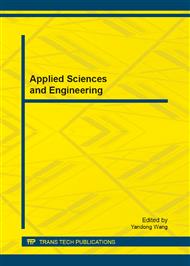p.362
p.367
p.372
p.376
p.381
p.386
p.391
p.396
p.401
Large DOF Coupler/Draft Gear System Models for Rail Vehicles
Abstract:
Aiming at accurate predictions of coupler/daft gear systems' dynamic behaviour. Based on the analysis of structural and kinematic relations of two typical systems, hysteretic nonlinear draft gear models and 9DOF (Degree of freedom) detailed coupler/draft gear system models were developed. Frictional pairs on coupling surfaces and coupler tails along with interactive aligning shoulder models were integrated into system models. Utilizing two detailed locomotive models simulations were performed on a section of special track to validate the rationalities of coupler/draft gear system models. Simulation results indicate that all parts in coupler/draft gear system models can fullfill their roles, and the system models themselves can reproduce the run-time behaviour of coupler/draft gear systems with high reliability and accuracy.
Info:
Periodical:
Pages:
381-385
Citation:
Online since:
September 2012
Authors:
Keywords:
Price:
Сopyright:
© 2012 Trans Tech Publications Ltd. All Rights Reserved
Share:
Citation:


